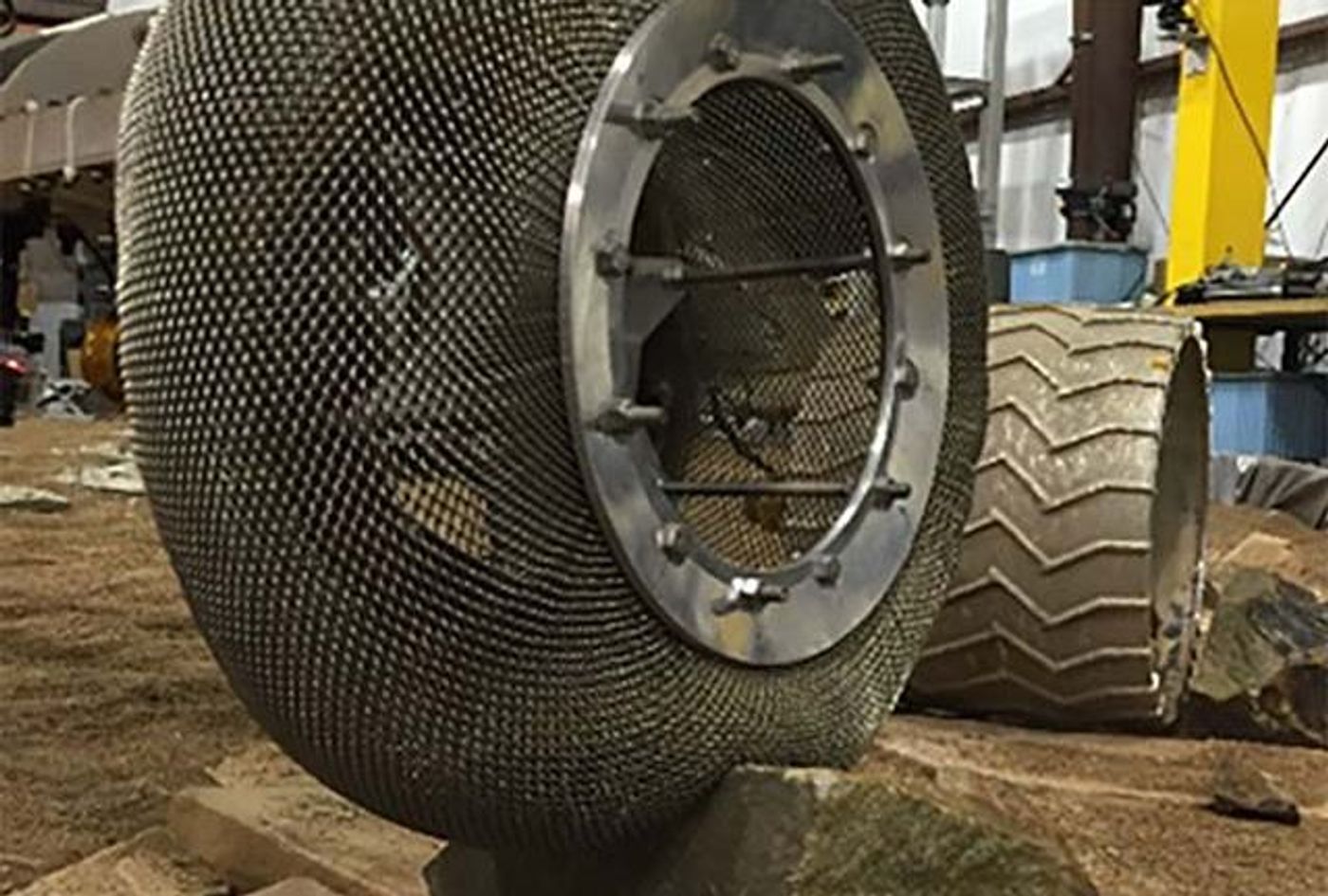New Wheel for Martian Rovers Might Be the Most Durable Yet
Images snapped by the Curiosity Rover’s onboard imaging system earlier this year indicated that its aluminum wheels were breaking down. As it would seem, nearly 10 miles of roving on the red planet’s harsh terrain was taking its toll on Curiosity’s CNC-machined aluminum wheels.
NASA isn’t in the market to send replacement wheels to Mars anytime soon, but scientists can still use what they’ve learned from Curiosity’s wheel longevity to improve the design and reliability of autonomous rovers’ wheels in the future.
Image Credit: NASA/JPL via Universe Today
One design that caught NASA’s attention recently was the Shape Memory Alloy Tire, which does away with the rigid structure round on modern Martian rovers in place of a more flexible design that looks almost like a spring-loaded sheet of chain mail compressed between a set of rim-shaped clamps.
Testing of the Shape Memory Alloy Tire at the Slope lab at NASA’s Glenn Research Center under Mars-like conditions underscored the promising capabilities and characteristics of the new metallic tire design.
Interested in how the new tire performed compared to a Curiosity-like counterpart? Look no further than the demonstration video below:
The problem with aluminum wheels, like those on Curiosity, is that the soft and malleable metal is much more susceptible to tread or wheel damage whenever the SUV-sized rover rolls over a steep or sharp rock. The Shape Memory Alloy Tire, on the other hand, compresses and decompresses whenever it runs over a comparable obstacle, so it doesn’t sustain the kinds of damage that a rigid aluminum wheel would.
Related: NASA's Curiosity Rover takes a selfie after drilling into Mars' surface
Unlike traditional spring tires that use a spring steel material, the Shape Memory Alloy Tire uses a stoichiometric nickel-titanium alloy. Engineers say the alloy’s atomic structure tolerates tremendous amounts of deformation while maintaining its shape better than traditional materials:
You could compress the Shape Memory Alloy Tire all the way to the axle, and it would still return to its original shape and size once you relieve the pressure. These durable properties make it more practical for rolling around on the harsh and rocky terrain of Mars because they would last significantly longer given the lack of smooth, paved roads for the rover to roll on.
There’s no telling when NASA might employ the new tire design for an official mission, but the upcoming Mars 2020 rover could serve as a viable test subject. With a launch expected by 2020, NASA should have plenty of time to ready the wheel as standard equipment.
It should be interesting to see if the Shape Memory Alloy Tire makes any headway or not, especially considering that studying the Martian surface is high on the list of interests for planetary scientists.
Source: Universe Today









